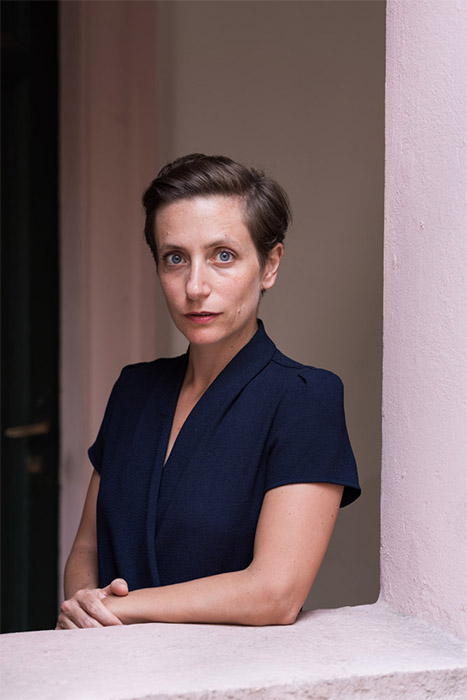The launch of Gallery.Delivery took place during the last Berlin Art Week (September 26-30, 2018), and there is a new edition planned for this year’s event (September 11-15, 2019). The first edition included 13 artists who realised objects, clothing, performances, music, paintings, sculptures, collages and participative pieces, all packed in the ‘White Cube’ courier bag. The two-hour long ‘private view’ cost €15 (the approximate price of a delivered meal) and could take place in your apartment, in your office, or at a party. You could invite your friends and family, take pictures (and above all, share them on your social media), and even buy some works like in a real gallery. Prices for works ranged from €3.50 to €3,600 (one was for free). ‘The first edition was not strictly organised thematically, so Gallery.Delivery can establish itself as a format,’ says Schmieg. ‘However, all works responded to the format of the deliverable exhibition, including the physical presence of the courier, the value of work, as well as the changing relationship between person, place, and thing in the context of ubiquitous connectivity and the Internet of Things.’ For example, German artist Nadja Buttendorf realised a hook to hang your thumb on like a painting called Art Nail, while Italian artist Silvio Lorusso proposed a sticker with the writing ‘Shouldn't you be working?’ – a question that we all ask ourselves several times a day in these times of social media. The artistic duo !Mediengruppe Bitnik collaborated with French electronic music artist Low Jack to present Alexiety, a record you have to play so loud that your neighbours, and in particular their devices, can hear it. It does not play music, but commands to delete for Siri, Alexa, and the Google Assistant, a hack into your neighbour's Smart Home.

Even further back in the history of art there were similar attempts by renowned artists: La-boîte-en-valise by Marcel Duchamp, a series of miniatures of his own works collected in a leather suitcase; Daniel Spoerri's Der Koffer, a compendium of small works by the main representatives of the nouveau réalisme movement; Robert Filliou's gallery, which the artist transported in his hat, are just some of the out-of-the-cube examples. In our hyperconnected society this need for new models of display caught on in the digital world, so much so that Roehrs & Boetsch, which was founded in 2016 by Nina Röhrs to reflect on digitalisation and its implications for society, has now launched a virtual gallery for virtual art called CUBE. Inaugurated on 17 January 2019, with a group show dedicated to sculptural works, it is a virtual gallery building on five floors operating alongside her physical space in Zurich, that visitors can access using VR glasses. Inside you embark upon an immersive tour among the artworks, walking around them, listening to sound pieces, interacting with them. Goodbye old gallery, welcome to the future!





